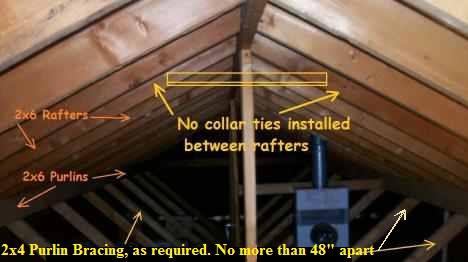The 2015 international residential code does not require collar ties or collar beams.
Moving roof collar ties.
This raised up horizontal tie is known as the collar tie.
Collar ties are the appendix of roof framing an evolutionary dead end in home building hanging on by just a couple of nail points.
In this how it works article managing editor debra judge silber explains the role of collar and rafter ties in the framing of a roof collar ties are necessary to prevent separation of the roof at the ridge due to wind uplift.
In collar tie roof the horizontal tie is raised up from the feet of the rafters to the almost middle of the rafters.
The rafter ties are incorrectly labelled as collar ties.
Collar ties rafter ties tension beams structural ridge beams.
Collar ties should not be fixed more than one third or one half of the rise of the roof up from the wall plate.
Some of these can support the roof and prevent ridge sagging and wall spreading.
Move the catwalk to.
In general leaving every third joist or collar tie intact will provide adequate support for the roof load and the ties in between can be removed.
Collar ties provide additional structural support for wood framed roofs that bear the weight of clay or concrete roofing tiles.
The upper collar tie does not experience the tension that the lower rafter tie is resisting if that tension is resisted in the upper third the roof is probably on the ground.
This article describes and illustrates the different types of support that prevents roof sagging and wall bulging at buildings including definitions of collar ties rafter ties and structural ridge beams.
The only time collar ties do any good is when they are specifically designed to be functional by an engineer or architect and are installed with meticulous care by the framer according to detailed drawings.
How to install collar ties to roof rafters.
Roof classification of different types of roofs.
Collar ties may take up space in the attic of your home but they are there for a reason.

